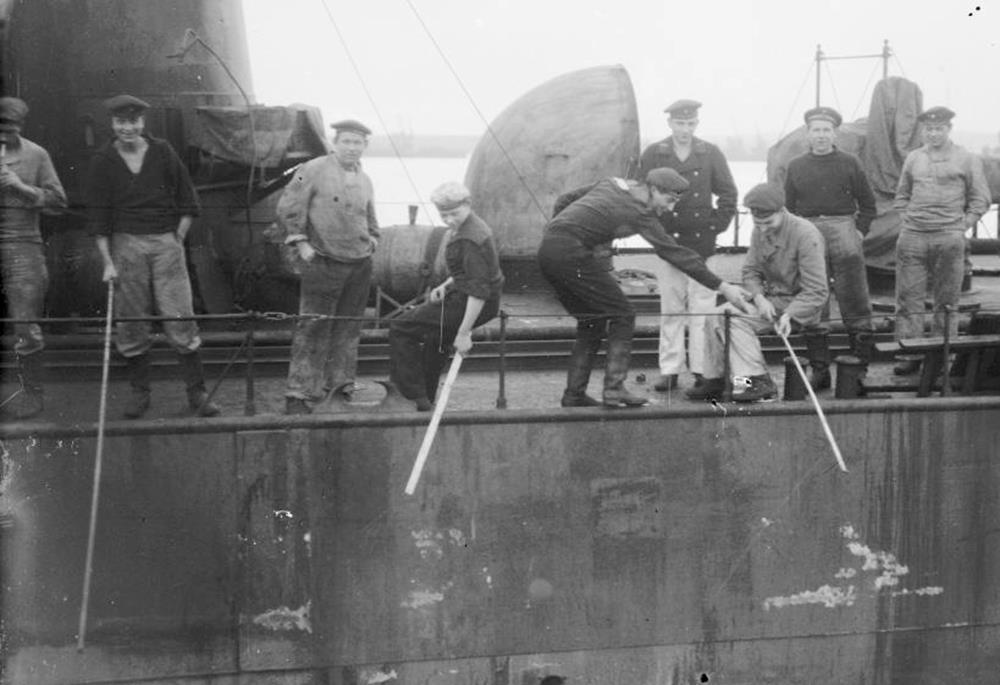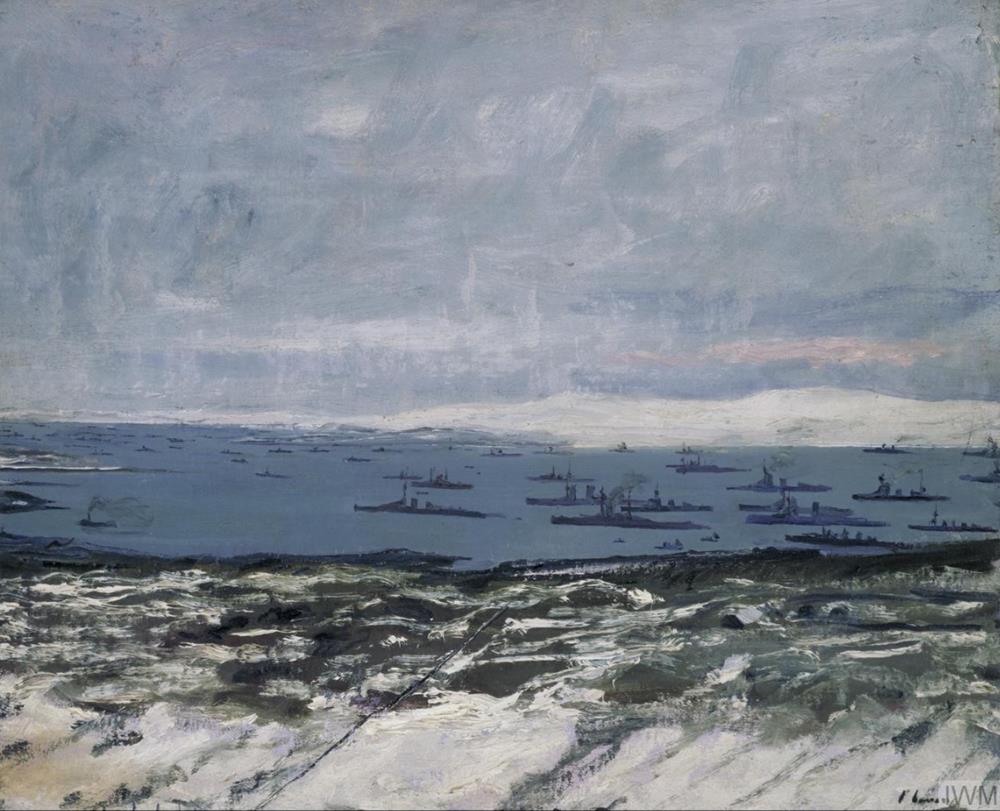High Seas Fleet Surrender 39 – Life in Scapa Flow
| < 38 – US Navy Homeward Bound | Δ Index | 40 – “Paragraph 11 – Confirm” > |
About 20,000 officers and men had sailed the ships to Scapa Flow. 4,000 were returned to Germany on 3 December 1918, 6,000 on 6 December and 5,000 on 12 December, leaving 4,815 in the care and maintenance parties.
These numbers continued to reduce as approximately 100 were repatriated each month thereafter.
Food was sent from Germany twice a month but was monotonous and not of good quality.
 Catching fish and seagulls provided a dietary supplement and some recreation.
Catching fish and seagulls provided a dietary supplement and some recreation.
A large amount of brandy was also sent over.
The British refused to allow any of the interned sailors to go ashore or visit any other German ships. British officers and men were only allowed to visit on official business. All post to and from Germany was censored. German seamen were granted 300 cigarettes a month or 75 cigars. There were German doctors in the interned fleet but no dentists; the British refused to provide dental care.
News was provided in the form of several-days-old newspapers. Rear-Admiral von Reuter had access to a British drifter at his disposal for visiting ships and issuing written orders on urgent business, and his staff was occasionally allowed to visit other ships to arrange repatriation of officers and men.
 Scapa Flow from the Signal Station – Sir John Lavery
Scapa Flow from the Signal Station – Sir John Lavery
The conditions on the ships and lack of discipline struck all visitors. Many of the ships were under the control of Workers’ and Soldiers’ parties who refused to accept orders from their officers. Growing discontent often erupted into drunkenness, rioting and violence.
Von Reuter was granted permission from the British to transfer his flag from the battleship Friedrich der Grosse to the light cruiser Emden, because he could no longer bear the clatter of mutinous sailors roller-skating on the battleship’s iron deck, which kept him awake.
As the months rolled by, von Reuter became increasingly concerned by the slow pace of the peace negotiations in Paris, where the fate of his ships was proving to be a stumbling block. The French and Italians each wanted a quarter of the ships. The British wanted them destroyed, since they knew that any redistribution would be detrimental to the advantage in numbers they had compared to other navies.
In May 1919, learning of the possible terms of the Treaty of Versailles, von Reuter prepared detailed plans to scuttle his ships, but the indiscipline in the fleet made it impossible for him to take immediate action.
On 18th June, two of the regular transports left for Germany carrying the last of the mutinous sailors from Scapa Flow.
Rear-Admiral von Reuter now had enough reliable men who would carry out his instructions. That same day, he sent out secret orders from SMS Emden, paragraph 11 of which stated: “It is my intention to sink the ships only if the enemy should attempt to obtain possession of them without the assent of our government. Should our government agree in the peace to terms to the surrender of the ships, then the ships will be handed over, to the lasting disgrace of those who have placed us in this position.”
| < 38 – US Navy Homeward Bound | Δ Index | 40 – “Paragraph 11 – Confirm” > |